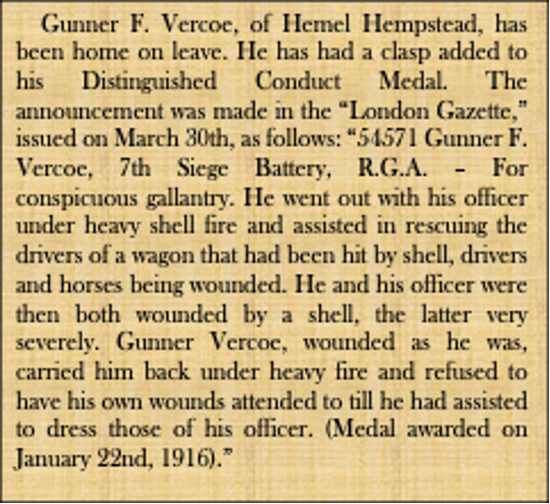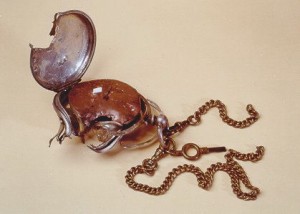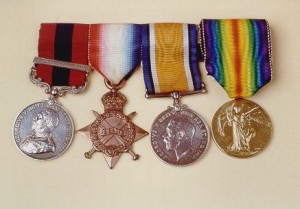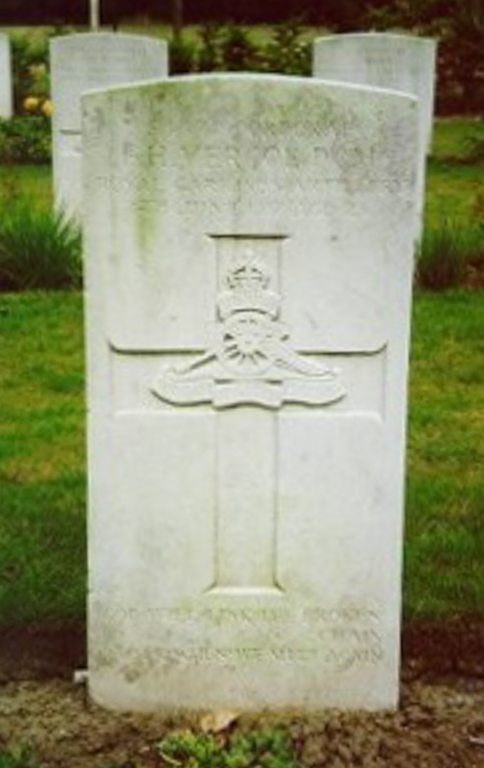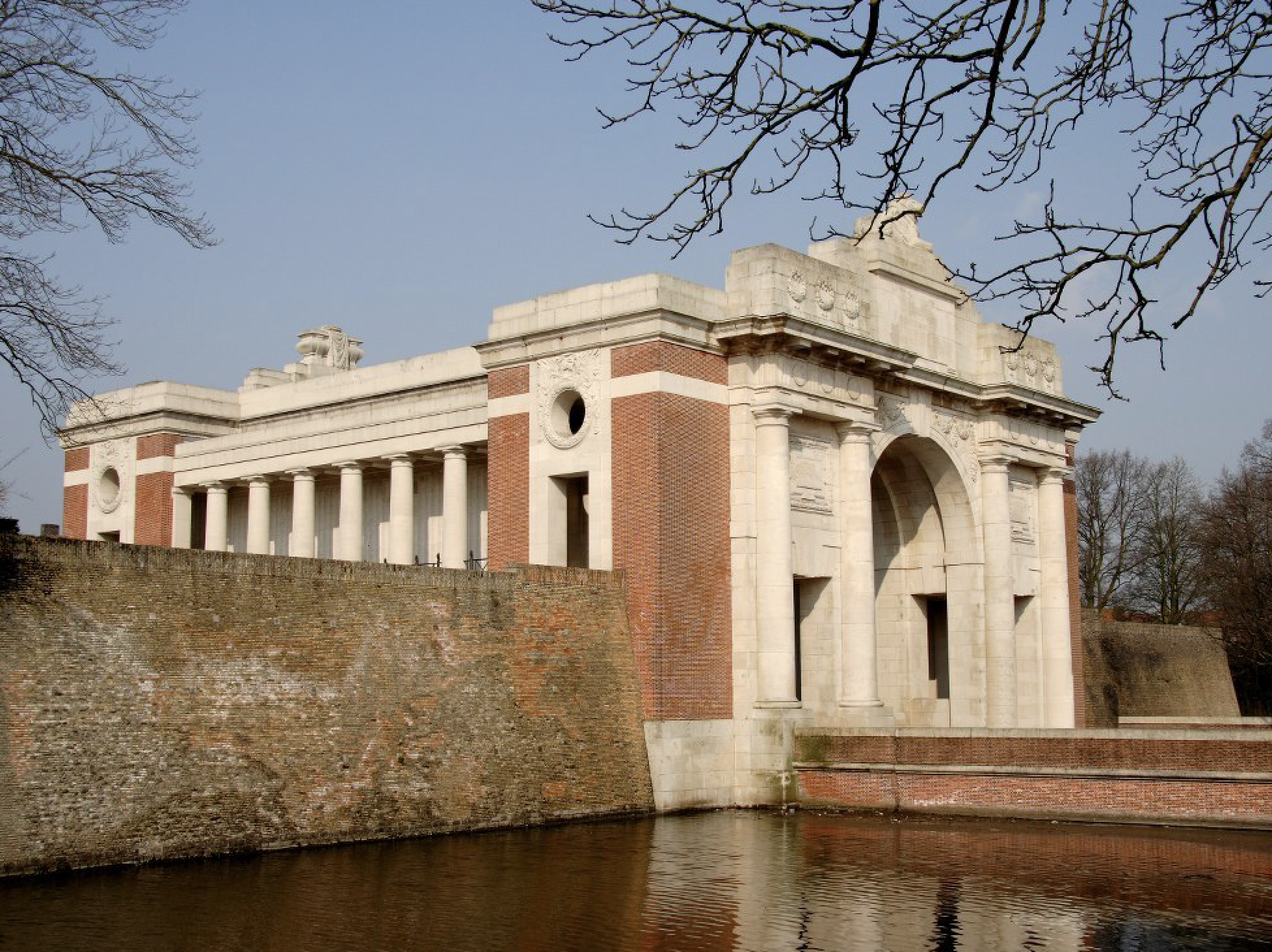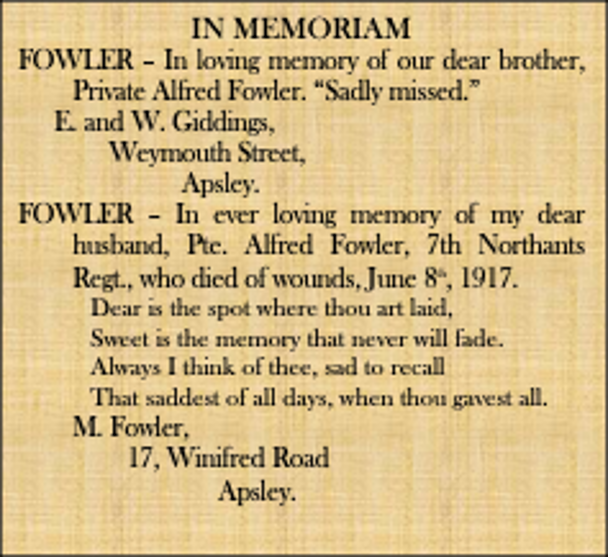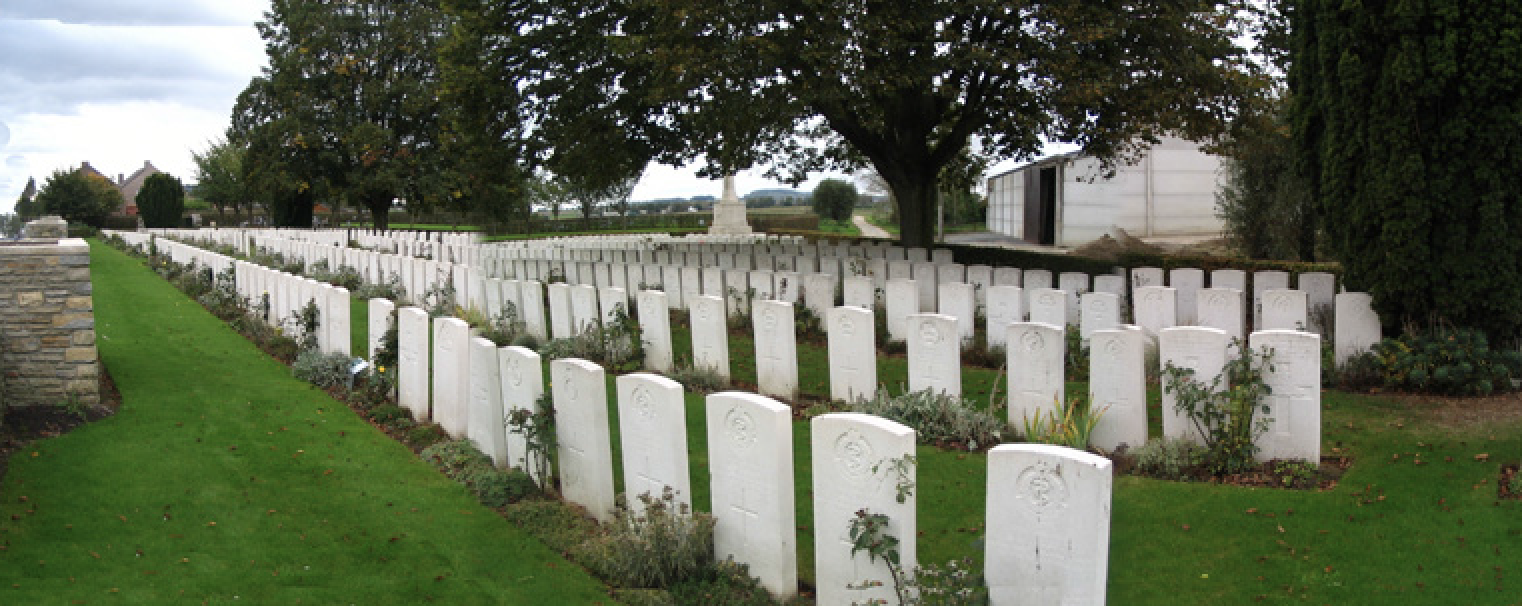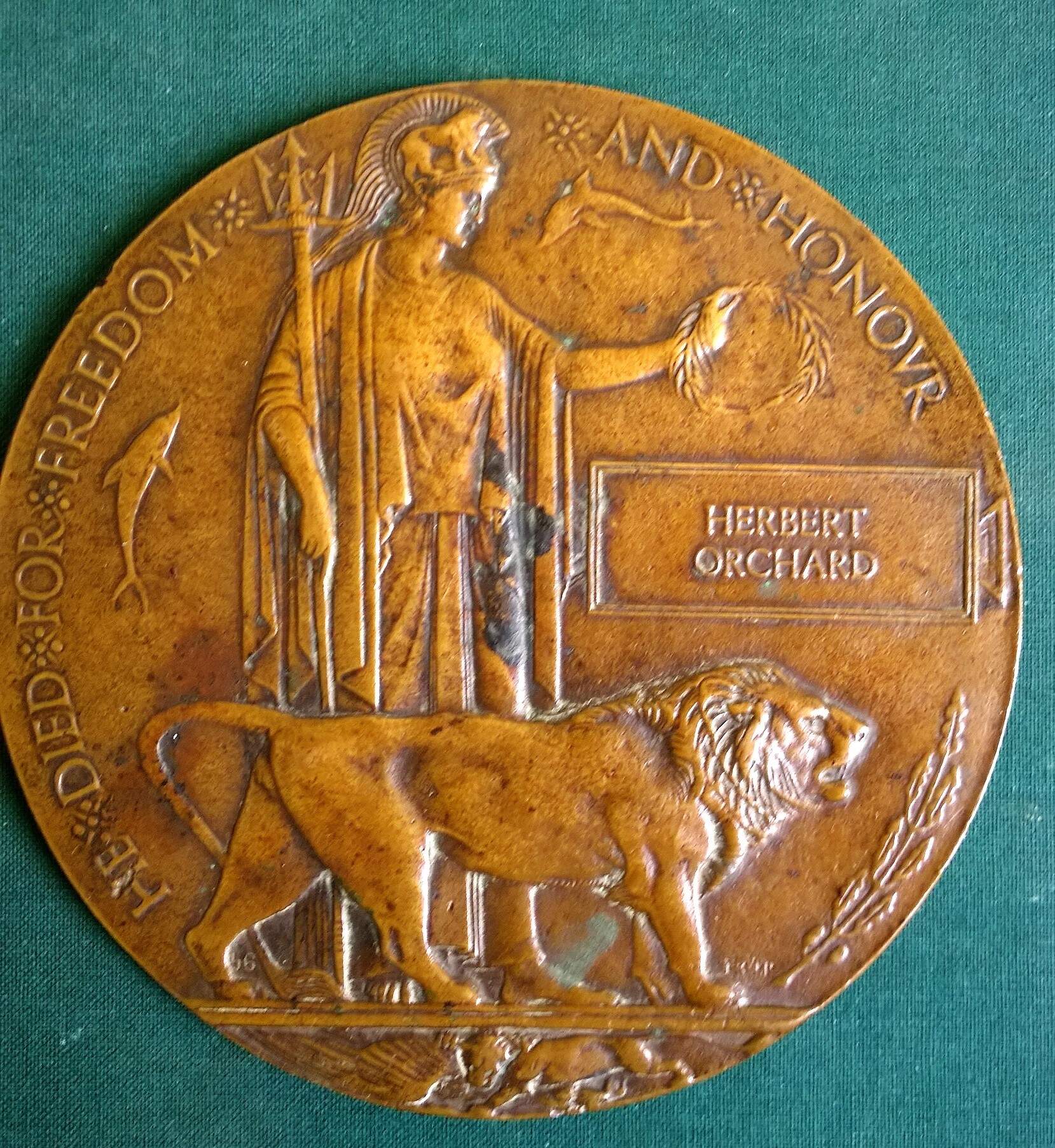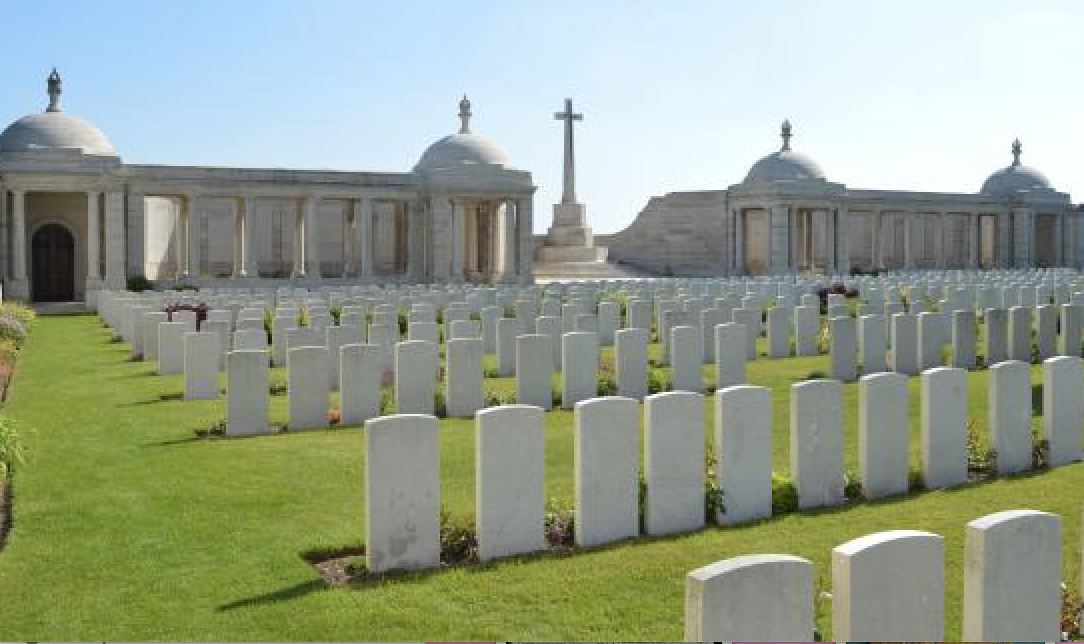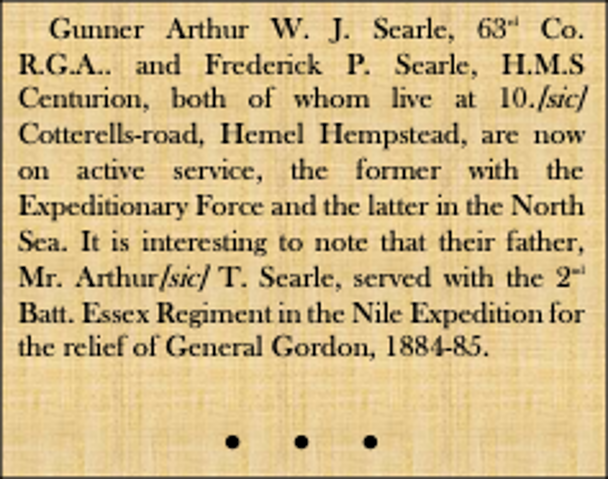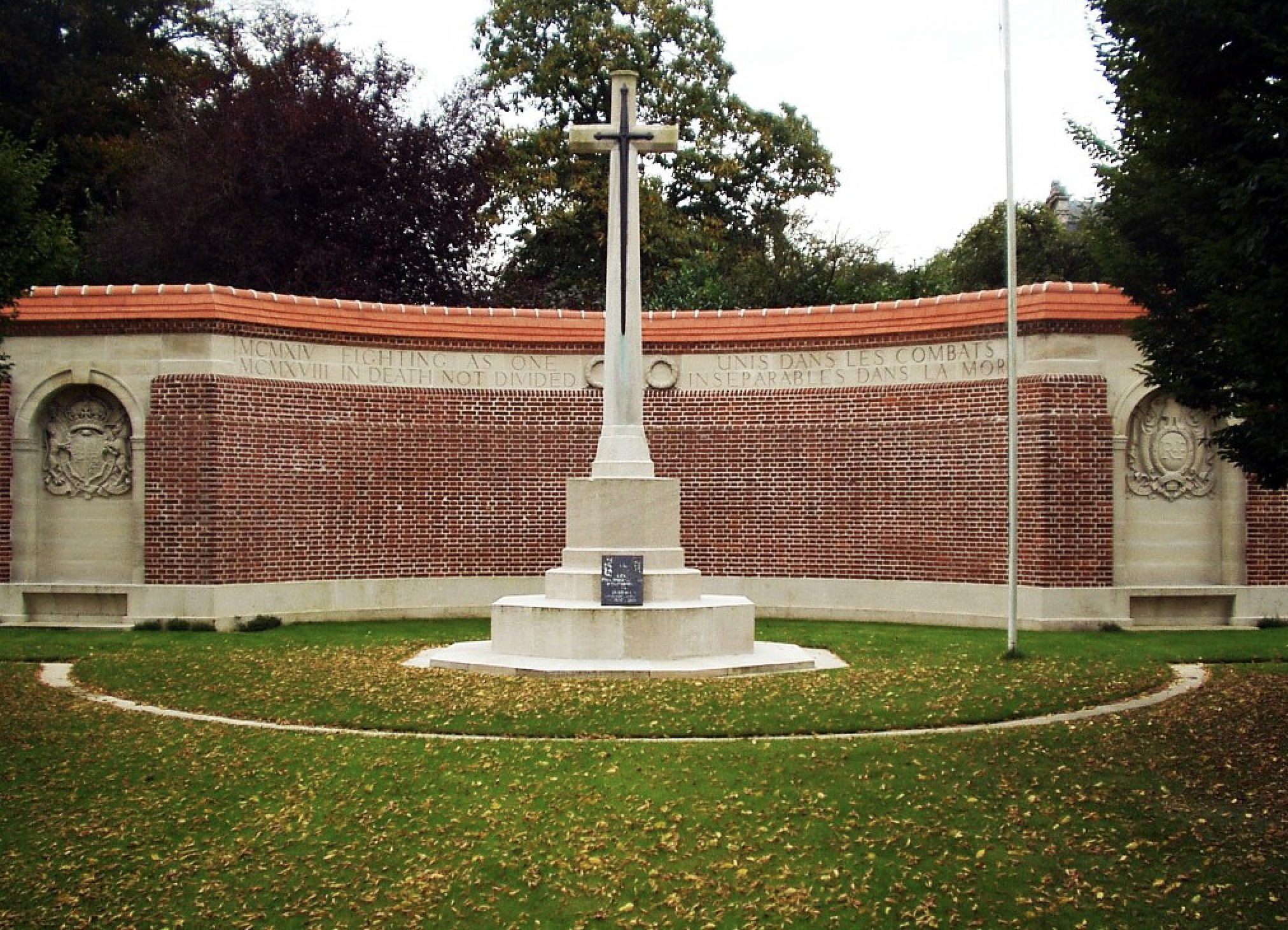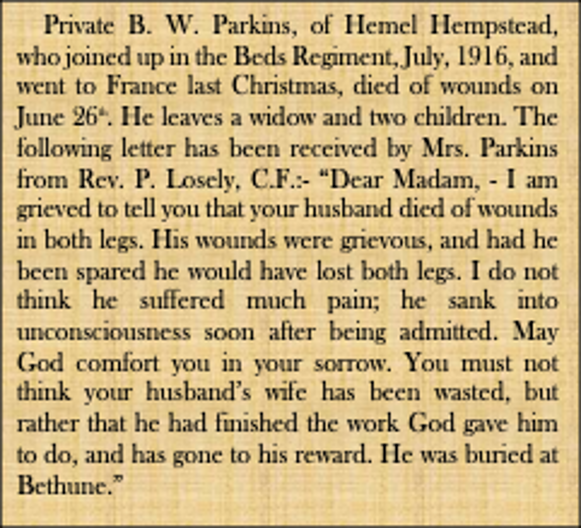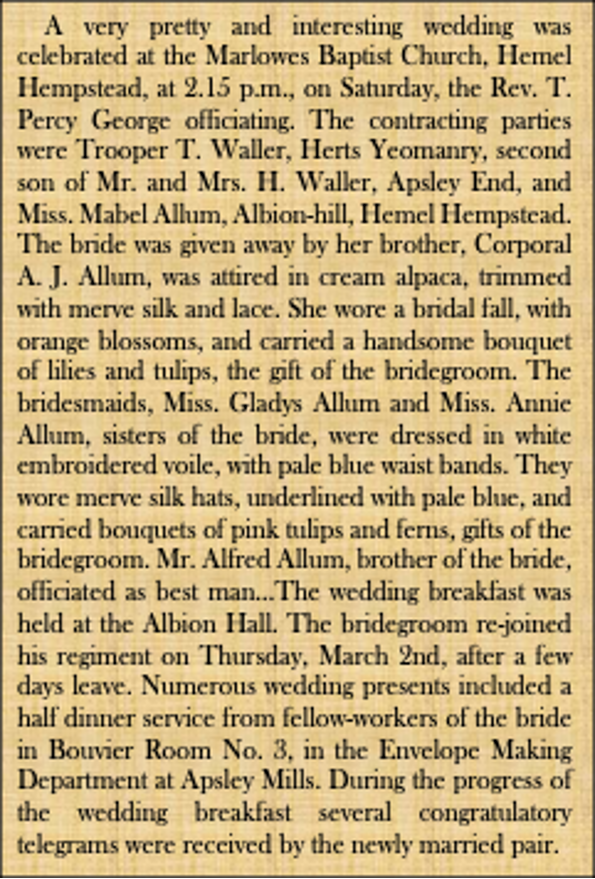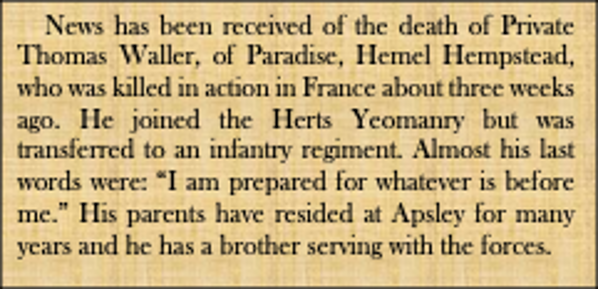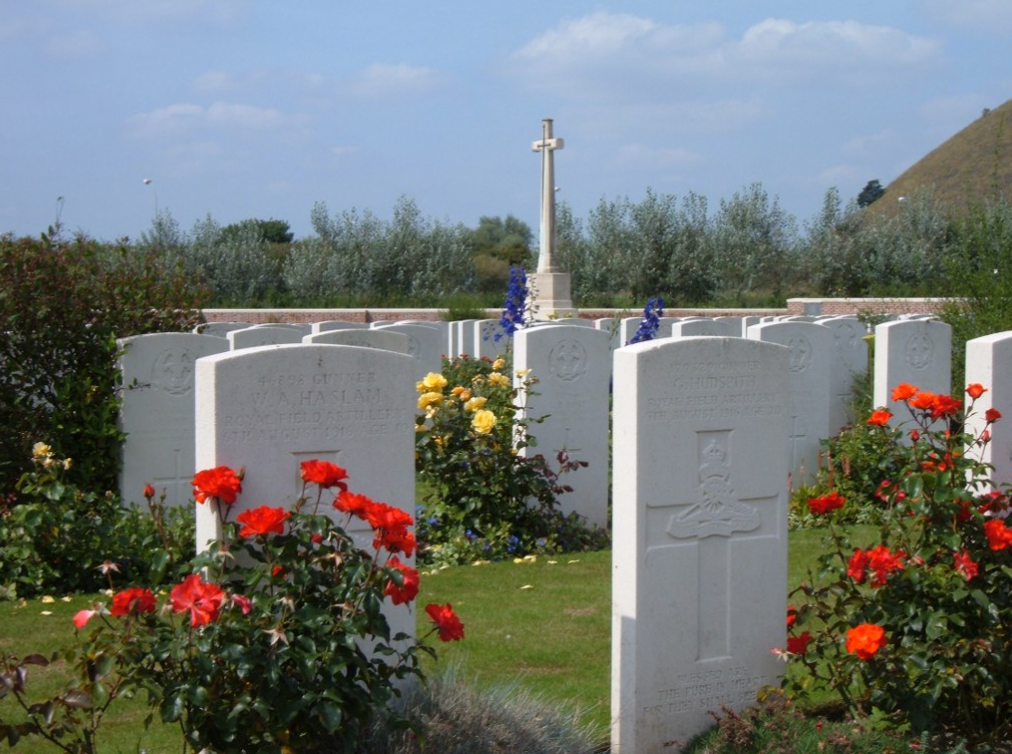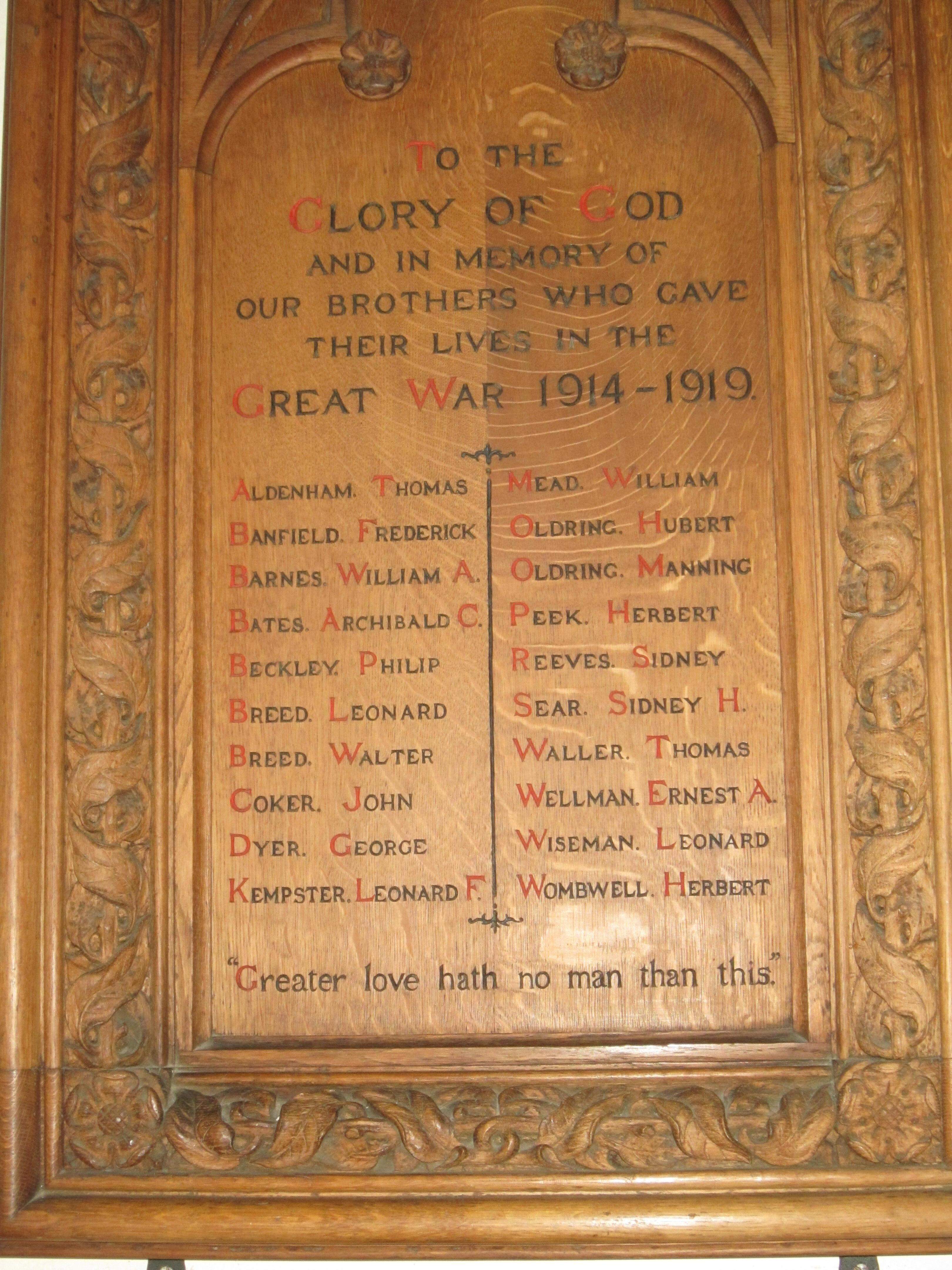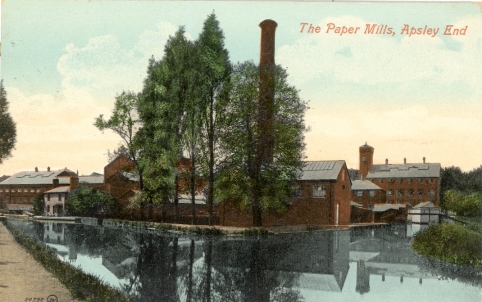Fallen in June 1917:
Francis Horward Vercoe D.C.M. and Bar
Major William Pain
Alfred Fowler
Herbert Orchard
Arthur William Searle
Thomas Jesse Glenister
Bertie Walter Parkins
Thomas Waller
William Hall
FRANCIS HORWARD VERCOE D.C.M. and Bar
54571 Corporal
145th Siege Bty., Royal Garrison Artillery
Killed in Action Monday 4th June 1917
Remembered with Honour, Underhill Farm Cemetery, Hainaut, Belgium, Grave A.4.
Francis Horward Vercoe was born in Hemel Hempstead in late 1889 the second son of James Breed Vercoe and Mary Louisa Grist. Francis had an older brother Henry Giles and a younger sister Ellen Louisa. When he was born his family lived at Adeyfield Farm near Leverstock Green, Hertfordshire and his father worked as a ‘Carpenter and Builder’
Francis lost his father in 1895, the year he entered Bury Mill End School at six years of age. His first day was recorded rather candidly by his teacher who said that “he was very backward and hardly knew his letters”.
The same comment was applied to another young boy, Joseph Hosier, who started on the same day as Francis. Joseph was killed just a month before Francis in France and his biography also appears on this site.
This inauspicious start to his education soon got much worse due to the family’s straitened circumstances following his father’s death. First his brother Henry was sent to "Spurgeons Orphanage" also known as Stockwell orphanage, a home and school for fatherless boys. Shortly afterwards young Francis was sent to King Edward’s School, Wormley Hill, Witley in Surrey. This was described as a school for the destitute and it appears that most of the children, whilst recorded as ‘scholars’, in fact had to work in order to support their attendance. In 1901 aged eleven, Francis was at King Edward’s and worked as a ‘Kitchen Boy’.
This desperate start in life gave no indication of the heroic and selfless deeds that Francis would perform in the most perilous of situations during to coming war.
By the time of the 1911 Census, Francis lived and worked in Stanmore, Middlesex as a ‘Baker’ but he later left this trade and joined the Metropolitan Police on the 12th January 1915. He time in the force was brief however and five months later, he attested in London and enlisted with the Royal Garrison Artillery (RGA) as a Gunner.
He was posted to Great Yarmouth immediately to 13 Company RGA before being posted again just over two weeks later to Lydd in Kent. Only twenty-four days after joining the Colours he was sent to France where he disembarked on the 31st July 1915 and joined the 7th Siege Battery RGA on the 23rd August 1915.
In December 1915 Francis was near Ypres with his comrades and on the 29th December, he performed the first of two acts of extreme bravery. The first resulted in the award of the Distinguished Conduct Medal (DCM) and the citation in the London Gazette the following January states the following: “For conspicuous gallantry and devotion to duty near Ypres on 29th December, 1915, when under heavy fire of high explosive and gas shells, he left his dug-out and went about 200 yards through a dense cloud of gas to a farm where another battery was billeted, and rendered first aid to several wounded men. While he was doing this a bursting shell blew him across the room in which he was working, but he coolly picked himself up and returned to his work.”
A single brave act under such conditions is remarkable enough, but just over a month later on the 14th February 1916, Francis performed another stirring deed. Again the citation describes the event: “For conspicuous gallantry. He went out with his officer under heavy shell fire and assisted in rescuing the drivers of a wagon which had been hit by a shell, drivers and horses being wounded. He and his officer were then both wounded by a shell, the latter very severely. Gunner Vercoe, wounded as he was, carried him back under heavy fire and refused to have his own wounds attended to till he had assisted to dress those of his officer.”
For this second act Francis was awarded a ‘Bar’, in effect a second DCM for his bravery.
His actions were celebrated back in Hemel Hempstead and the Gazette published a number of reports containing descriptions of events and letters from his officers and comrades.
The Distinguished Conduct Medal was established in 1854 by Queen Victoria as a decoration for gallantry in the field by other ranks of the British Army. It is the oldest British award for gallantry and was a second level military decoration. (see extract)
Francis spent two weeks in a Base Hospital recovering from his wounds before returning to his unit on the 11th March 1916. Shortly afterwards he was granted home leave and returned to Hemel Hempstead on the 24th March where he had thirteen days with his family and friends. His visit home was reported in the Hemel Gazette. (see extract)
On his return to France he was soon back in hospital, this time having accidentally fractured a fibula. His injury was serious enough that his recovery required evacuation to England and he was transferred to a VAD Hospital in Torquay. He spent four months in recovery before he returned to France, this time posted to the 145th Battery RGA. His return coincided with his promotion to Corporal on the 2nd December 1916.
When Francis met his end, it was ironically when least expected and possibly when he was as safe as he could have been at the Front. He was sitting outside his dug-out reading, when a sudden burst of shelling from a nearby wood resulted in a shell hitting him and killing him instantly.
Francis died on Monday, 4th June 1917.
Once again, the Gazette carried a report of his end in the form of a letter from a comrade. (see extract)
Francis is Remembered with Honour in Underhill Farm Cemetery, Hainaut, Belgium where he is interred in Grave A.4. The inscription on his headstone, requested by his mother Mary Louisa, reads: “GOD WILL LINK THE BROKEN CHAIN CLOSER WHEN WE MEET AGAIN”.
He was 28 years old when he died.
Francis was entitled to the 1914 – 15 Star, the British War Medal and the Allied Victory Medal.
Corporal Vercoe middle back row (Image: https://www.scottishpolicemedals.co.uk)
Extract from The Hertfordshire, Hemel Hempstead Gazette and West Herts Advertiser 4th Mar. 1916
Extract from The Hertfordshire, Hemel Hempstead Gazette and West Herts Advertiser 1st Apr. 1916
Extract from The Hertfordshire, Hemel Hempstead Gazette and West Herts Advertiser 21st Jul. 1916
L-R: Cprl. Vercoe's shattered pocket watch from the shrapnel which killed him; His war medals including his DCM and Bar (left); his headstone in Underhill Fram Cemetery, Hainaut, Belgium (Images: Dacorum Heritage Trust)
MAJOR WILLIAM PAIN
35888 Private
69th Coy., Machine Gun Corps (Infantry)
Killed in Action Thursday 7th June 1917
Remembered with Honour, Ypres (Menin Gate) Memorial, West-Vlaanderen, Belgium, Panel 56
Major William Pain was born in Boxmoor, Hertfordshire in September 1889 the fifth child born to George Pain and Jane Plumridge. George and Jane had six children who were: George Herbert, Alice Ethel, Louise Harriet, Millicent Mary, Major William and Valentine Henry.
Major’s uncommon name is believed to be of Norman origin and came to England at the time of the invasion in 1066. It is variously described as meaning ‘Great’ or ‘Important’ and of course, was eventually assigned military significance with the rank between Captain and Lieutenant Colonel.
Major’s father George was a ‘Dairyman’ and ran a Dairy business at ‘Home Farm’ on St John’s Road where the family all grew up. His business appeared in the ‘Commercial’ listing of the “Old Ordnance Survey Map” of 1897 and the oldest boy, known as Herbert, would take over the dairy after George died in January 1906.
The family business clearly thrived and by 1901 George’s enterprise had expanded to sell coal and hay as well as milk, but when young Major left school he joined John Dickinson & Co. Limited rather than his father’s dairy. Major trained as a ‘Clerk’ with Dickinsons and he was still with the firm when war broke out in 1914.
Major left Dickinsons and went to Watford where he attested on the 8th December 1915 and enlisted with the 4th Battalion Bedfordshire Regiment. When he joined the ‘Colours’ Major was twenty-six years and four months old and well above average height and weight, at five feet ten-and-one-quarter inches tall and just over ten stones in weight.
The 4th was the ‘Reserve’ Battalion of the Regiment and initially moved to Felixstowe to provide home defence around Harwich, as well as drafts for the front line battalions. At first the plan was that the 4th Bedfordshires would continue in a defence role at home, but it seems that Major, who joined a year after the war started, was impatient to get to the Front. At some point in early 1916 he transferred to the Machine Gun Corps (MGC) and after completing his basic training he was sent to France.
He disembarked at Boulogne on the 25th June 1916 and moved to the Base Depot at Camiers to await orders to move. These came on the 5th July when he first joined the 168th Company, before transferring ten days later to the 69th Company which was under the orders of the 69th Infantry Brigade in the 23rd Division.
By late 1916, Major was with his unit north of Ypres and his service records recorded that on the 6th November 1916 he was punished and deprived of four days pay, his misdemeanour; “Laughing on 2.0pm parade”.
Two months later in January 1917 he was on another ‘fizzer’ for; “Not being shaved when old guard dismounted at 11am”. He avoided further disciplinary action by ‘accepting three extra fatigues’.
The following June the 6th MGC was south of Ypres preparing for the what became known as the Battle of Messines Ridge, a strategic German stronghold since 1914. An immense artillery bombardment of the German lines had begun on the 21st May, involving 2,300 guns and 300 heavy mortars. This barrage ceased at 02:50 on the morning of the 7th June but silence prevailed for only twenty minutes.
At 03:10, the order was given across the line to detonate mines totalling 600 tons of explosive which have been positioned underground beneath the enemy position.
The resulting blast blew the crest off the Messines-Wytschaete ridge and was reported as audible in Dublin and by Lloyd George in his Downing Street study. The combined sound of the simultaneous mine explosions comprised the loudest man-made explosion to that point in human history. The lighting up of the sky as the detonations ran across the ridge was likened to a 'pillar of fire'.
The effect of the mine explosions upon the German defenders was devastating and some 10,000 men were killed. Nine divisions of Allied infantry immediately advanced under protection of a creeping artillery barrage, tanks and gas attacks and reached the initial objectives within three hours.
Anticipating the plan at Messines the Commander of the 5th Army, General Plumer, was alleged to have said to his staff: "Gentlemen, we may not make history tomorrow, but we shall certainly change the geography."
The British Army suffered over 17,000 casualties in capturing the salient at Messines and Major William Pain was one of the men who was ‘Killed in Action’ during the first advance. Initially listed ‘Missing Presumed Killed’ it was later confirmed officially that Major had died on Thursday, 7th June 1917.
A brief entry in the Hemel Gazette reported that he was missing a few weeks after the action at Messines. (see extract)
The Pain family had been members of the congregation at the Baptist Chapel in Russell Place, Boxmoor and Major was commemorated on a memorial plaque in the church. The plaque was subsequently removed when the church was demolished and can now be seen in Carey Baptist Church on Marlowes, Hemel Hempstead.
Boxmoor Baptist Church where Major was a member of the congregation (Image: http://www.hertfordshire-genealogy.co.uk)
Messines-Wytschaete Ridge the crater following the massive explosion (Photo: Public Domain)
Extract from The Hertfordshire, Hemel Hempstead Gazette and West Herts Advertiser 30th June 1917
Boxmoor Baptist Chapel Memorial Plaque (now in Carey Baptist Church) (Photo: Kathleen McLeod)
John Dickinson & Co Limited War Memorial Apsley (Photo: Traquair Photography)
Ypres (Menin Gate) Memorial, West-Vlaanderen, Belgium (Photo: CWGC)
He was also commemorated on the John Dickinson & Co Limited war memorial in Apsley.
Major is Remembered with Honour on the Ypres (Menin Gate) Memorial, West-Vlaanderen, Belgium, Panel 56.
He was 27 years old when he died.
Major was entitled to the British War Medal and the Allied Victory Medal.
ALFRED FOWLER
201972 Private
7th Bn., Northamptonshire Regiment
Died of Wounds Friday, 8th June 1917
Remembered with Honour, Dickebusch New Military Cemetery Extension, West-Vlaanderen, Belgium, Grave III. C. 21.
Alfred Fowler was born in the village of Waddesdon in Buckinghamshire on Wednesday, 18th October 1876 and baptised in the church of St Michael and All Angels on Monday, 22nd January 1877. He was the second child and first son born to John Fowler and Mary Creed who had seven children who were, Edith, Alfred, Alice, Eli, Frederick, Violet and Lucy. Eli died in 1882 aged just one and his father John died in 1904 aged fifty-three.
Alfred had a variety of jobs in a wide range of locations over the years beginning as a “Labourer” after he left school before appearing on the 1891 Census, living in Eastleigh in Hampshire and working for the Railways. Ten years later he had moved to London where he had found work as a “Musician” in a theatre.
It was when he moved to London that he came into contact with his cousin Margaret Fowler, also from Waddesdon, and they soon became sweethearts. They returned to Waddesdon in 1911 and were married before they settled at 17 Winifred Street in Apsley where Alfred had come to work.
On the outbreak of war Alfred was above the enlistment age but when the Military Services Act was passed in May 1916, the upper age was increased to forty-one and included married men previously exempt. This made Alfred eligible for service and in June 1916 he attested in Hemel Hempstead and joined the Colours.
By this time volunteers could no longer express a preference for a regiment and instead were assigned to a Training Battalion before being posted to the Frontline. It is not known when Alfred went to France, but it is likely to have been in early 1917 when he was posted to the 7th Battalion Northamptonshire Regiment.
If he arrived before April he would have been in action at Vimy Ridge, but he was certainly at the Front when the 7th Battalion fought in the Battle of Messines in June 1917. Starting on the 7th, the Battalion moved into position and immediately came under very heavy German shelling which caused a few causalities, including the Commanding Officer who was “…struck over the heart by a piece of shell and severely bruised”.
The following day at 2.30am, Alfred and his comrades attacked and successfully gained enemy ground during the day. At 10pm however, they came under a significant barrage from the Germans as they attempted a counter-attack and it was during this action that Alfred was fatally wounded.
Along with nineteen other men, he was taken down the line to No.4 Light Field Ambulance for treatment, but this proved to be futile. He succumbed to his wounds shortly after arriving.
Alfred Died of Wounds on Friday, 8th June 1917.
His death was reported in the Hemel Gazette at the end of the month and a year later his wife Maggie, placed an “In Memoriam” notice in the paper to commemorate her dead husband. (see extract)
Just a month after placing the notice Maggie was killed as a result of an accident, when she crashed into a bridge at the bottom of a hill, after the brakes had failed on the bicycle she was riding. Her family took her body home to Waddesdon where she was buried on the 3rd August in the churchyard of St Michael’s and All Angels.
Extract from The Hertfordshire, Hemel Hempstead Gazette and West Herts Advertiser 8th Jun. 1918
Waddesdon village War Memorial (Photo: Traquair Photography)
Dickebusch New Military Cemetery Extension, West-Vlaanderen, Belgium (Photo: CWGC)
Alfred was commemorated on the War Memorial plaque in St Mary’s Church, in Apsley End and on Waddesdon village War Memorial just across the road from Maggie’s grave. At least five of their cousins are also commemorated on the village memorial.
Alfred is Remembered with Honour in Dickebusch New Military Cemetery Extension, West-Vlaanderen, Belgium, where he is interred in Grave III. C. 21.
He was 40 years old when he died.
Alfred was eligible for the British War Medal and the Allied Victory Medal.
HERBERT ORCHARD
203223 Private
1st/4th Bn., York and Lancaster Regiment
Killed in Action Tuesday, 12th June 1917
Remembered with Honour, Loos Memorial, Pas de Calais, France, Panels 105 and 106
Herbert Orchard was born in Boxmoor, Herts on Wednesday, 7th April 1897 and baptised in St John’s Church in the village on Wednesday, 5th May a month after he came into the world. Herbert was the youngest of three children born to Robert Orchard and Emma Mallord and his older siblings were Ethel Mary and Robert. Ethel died aged three in 1893 and his mother Emma died in 1901 when Herbert was only four years old. His older brother Robert died in 1912 aged twenty.
He also had an older step-sister Nellie (Lilian) who married George Bates in 1906 and by 1911 they had moved into the Orchard family home at 30 St John’s Road in Boxmoor. Herbert’s brother-in-law George was killed only eight weeks after him in the Battle of Picklem Ridge in August 1917. His biography also appears on this site.
Herbert started his education in Boxmoor JMI on 8th February 1904 along with 35 other boys. Amongst his schoolmates were: Alfred Gash, Frederick Sharp, George Ivory, Harry (Henry) Charge, William Plummer and Frederick Leach. Like Herbert these young. boys were destined to fall in the Great War. Their stories are also on this site.
On leaving school on 23rd March 1910, Herbert started work as a wood turner in Boxmoor (Foster’s) Saw Mills where his father and older brother worked. He left the saw mills the following year when he obtained a job as an assistant in the card making department in Apsley Mills with John Dickinson and Co. Limited.
When war broke out Herbert was still to young to enlist aged seventeen but a few months after his next birthday he went to Hertford where he attested and joined the Hertfordshire Regiment on the 14th August 1915. He declared his age as "19 years and 2 months", although he was in fact a year younger, but his false declaration meant he could be sent overseas as soon as he finished training rather than having to wait another year.
On enlistment he was described as "C of E, 5 feet 9 inches, with normal vision and satisfactory physical development", declared fit for service and immediately sent to train with his regiment. It would be a full year before Herbert was sent to France, disembarking at Boulogne on the 31st August 1916, where he was transferred to the 1/4 York & Lancaster Regiment.
He had joined the Regiment just as it was about to move away from the Somme where it had been part of the follow-up assault wave in that brutal campaign. Over the next six months the 1/4 York & Lancaster moved north, to Neuve-Chapelle and Herbert saw action in the trenches until in June 1917 the following entry is recorded in the Battalion War Diaries: “FOSSE June 12 – A raiding party of 2 ½ companies (12 officers and 336 O.R) under Major J.E.D. STICKNEY entered the enemy’s trenches in M.30.C., capturing 13 prisoners of the 262nd Reserve Infantry Regiment. Casualties - 2nd Lt. A.P. O’DONNELL killed; 2nd Lts. W. RYAN and E. WILLIAMS wounded; O.R. 19 killed 55 wounded and 9 missing”
Night-time trench raids on enemy positions were a common tactic during the war and initially these were carried out by small teams. The purpose of the raids included amongst other things; gathering intelligence, reconnaissance or the capture of prisoners. As the War progressed the raiding parties increased in scale as can be seen from the account above which reports the involvement of 348 men. They were dangerous and unpopular amongst the troops.
It was during this raid on Tuesday, 12th June 1917 that Herbert was killed.
He is commemorated on the memorial plaque in St John’s church in Boxmoor.
Herbert’s family were presented with ‘The Memorial Plaque’ which was issued after the Great War to the next-of-kin of all British and Empire service personnel who were killed as a result of the conflict.
The plaques, about 4.75 inches (120 mm) in diameter, were cast in bronze, and came to be known as the "Dead Man’s Penny", because of the similarity in appearance to the much smaller penny coin. They were issued in a pack with a commemorative scroll from King George V; though sometimes the letter and scroll were sent first.
Herbert is Remembered with Honour on the Loos Memorial, Pas de Calais, France on Panels 105 and 106.
Boxmoor JMI School ©Peter Wagon Fine Arts www.peterwagonfinearts.co.uk
Herbert’s ‘Dead Man’s Penny’ (Photo: Brendan Sheridan)
St. John the Evangelist Church War Mameorial Plaque, Boxmoor (Photo: Traquair Photography)
Loos Memorial, Pas de Calais, France (Photo: CWGC)
He was only 20 years old when he died.
Herbert was eligible for the British War Medal and the Allied Victory Medal.
ARTHUR WILLIAM JOSEPH SEARLE
37643 Serjeant
176th Siege Bty., Royal Garrison Artillery
Died of Wounds Tuesday, 12th June 1917
Remembered with Honour, Hazebrouck Communal Cemetery, Nord, France, Grave I.G.6.
Arthur William Joseph Searle was born on Friday, 7th June 1895 in Weybridge, Surrey and baptised at St James’ Church just over two months later on Sunday, 18th August. He was the second son of Albert Thomas Searle and Emily Dormer who had four children together; Albert Ernest, Arthur William Joseph, Frederick Percy and an unnamed daughter who sadly died at birth in 1890.
Arthur’s brothers both served with the Royal Navy and saw active service in the War. Albert enlisted in 1915 before transferring to the Royal Airforce Reserve in 1918 from which he was demobilised a year later. Frederick joined in 1914 before the outbreak of war and served until 1927. Their father Albert had also been a regular soldier serving with the 2nd Battalion Essex regiment most notably during the Nile Expedition which was organised for the relief General Gordon at Khartoum in 1884-5.
Arthur’s mother Emily died suddenly in 1902 when he was only six years old and the family were living on Cemetery Hill in Hemel Hempstead where his father Albert worked as a drainage inspector with the local corporation.
When Arthur left school in 1908, he was the recipient of a silver watch presented to him by Alderman William Randall, an ex-Mayor of Hemel Hempstead. The award was in recognition of eight years unbroken attendance at school without ever having been late, a quite remarkable achievement and perhaps an indication of Arthur’s character.
By 1911 the family had moved to 110 Cotterells and fifteen-year-old Arthur was working as a printer in Apsley Mills with John Dickinson and Co. Limited. However, it appears from reports that young Arthur left his job and joined the Colours later in 1911 when he enlisted with the Royal Garrison Artillery (RGA). He would have been sixteen-years-old and too young to enlist, but it was not unknown for underage recruits to be accepted by regiments before and during the Great War.
He went to Malta and was part of the garrison there until the outbreak of war when his Battery returned to England. Arthur was sent to France with the 176th Siege Battery RGA, one of the newly formed units, on the 25th September 1916.
Siege Batteries were equipped with the 30-cwt version of the 6-inch Howitzer which fired a 100-pound (weight) shell to a maximum range of 6,000 yards.
A siege battery normally operated with three others under the command of a Siege Brigade and each battery was made up of five officers and one hundred and seventy-seven other ranks. It would have a range of draught horses, carts and wagons and it was most often employed in destroying or neutralising the enemy artillery, as well as putting destructive fire down on strongpoints, dumps, stores, roads and railways behind enemy lines.
Within a few days of disembarking in France Arthur was with his comrades in a forward section of the line near Messines laying down a barrage on enemy positions. This became an almost daily routine for the next eight months with the routine only varied by the level of intensity of the bombardments.
Leading up to June 1917 the barrages increased daily as the allies prepared for the attack on the Messines Ridge all of which culminated on the 7th June when battle commenced. On that day a series of large British mines, containing a total of over 455 tons of ammonal explosive, was detonated beneath German lines on the Messines-Wytschaete ridge. The explosions created 19 large craters, killed about 10,000 German soldiers, and were heard as far away as London and Dublin. While determining the power of explosions is difficult, this was probably the largest planned explosion in history until the 1945 Trinity atomic weapon test, and the largest non-nuclear planned explosion until the 1947 British Heligoland detonation. The Messines mines detonation killed more people than any other non-nuclear man-made explosion in history.
Arthur celebrated his twenty-second birthday the day the Battle of Messines commenced and spent the day engaged in almost non-stop shelling of the enemy positions, beginning at 3.10am and continuing until 10.45pm. At some point during the day he was severely wounded in the abdomen and immediately taken down the line to a Casualty Clearing Station. From there he was evacuated to the nearest base hospital, the New Zealand No. 1 Stationary Hospital at Hazebrouck, 18 miles (30kms) to the east.
Extract from The Hertfordshire, Hemel Hempstead Gazette and West Herts Advertiser 17th Oct. 1917
6-inch 30 cwt Howitzer World War 1 (photo: Histoire Patria)
Extract from The Hertfordshire, Hemel Hempstead Gazette and West Herts Advertiser 23rd Jun. 1917
Hazebrouck Communal Cemetery, Nord, France (Photo: CWGC)
Arthur is Remembered with Honour in Hazebrouck Communal Cemetery, Nord, France, where he is interred in Grave I.G.6. The inscription on is headstone, requested by his father Albert, reads “SLEEP ON BELOVED SLEEP AND TAKE THY REST GOOD-NIGHT”. These words are the opening line of the hymn, ‘The Christian’s Goodnight’.
He was 22 years old when he died.
Arthur was eligible for the British War Medal and the Allied Victory Medal.
THOMAS JESSE GLENISTER
42094 Rifleman
16th Bn., Royal Irish Rifles
Killed in Action Thursday, 21st June 1917
Remembered with Honour, Wytschaete Military Cemetery, West-Vlaanderen, Belgium, Grave I.F.5.
Thomas Jesse Glenister was born in Hemel Hempstead on Tuesday, 30th November 1897 to Amos William Glenister and Lois Amelia Putnam. Amos and Lois had nine children together who were; Alfred William, Beatrice Mary, Amos Seabrook, Joseph Austin, Annie, William, Thomas Jesse and two others who died in infancy. One of Thomas’s older brothers William was also killed in the Great War, falling at Passchendaele five moths after Thomas. William’s biography also appears on this site.
The family lived at 10 Corner Hall in Hemel Hempstead, next door to the forge where Thomas’ father Amos worked as a Blacksmith and Farrier just as his father Joseph had done.
In 1911, when Thomas was still at school, his oldest brother Alfred had returned home with two of his sons who were only two years younger than their uncle Thomas. Indeed, the three boys all attended the same local school, the Two Waters British school, which Thomas started on the 1st February 1905 and left on the 7th November 1911 aged thirteen.
On leaving school Thomas went to work with John Dickinson & Co. Limited like his brother William and he was there on the outbreak of war but too young to enlist. In early 1915 the Glenister family suffered a double tragedy when Thomas’s parents both died within a few months of each other at the beginning of the year.
Thomas continued to work at Dickinsons until he reached his eighteenth birthday and within six months, had obtained permission from his employer to leave and join the Colours.
He travelled to Watford in June 1916 where he attested and enlisted with the Bedfordshire Regiment. He was immediately posted to Felixstowe for basic training with the 3rd (Reserve) Battalion and spend the next seven months there before being sent to France.
When he did go, he was posted to the 16th Battalion Royal Irish Rifles (Pioneers) and joined his new regiment on 12th February 1917 at Ouderdom south-west of Poperinghe in Belgium.
By April Thomas had moved with his Battalion to the Wytschaete-Messines sector as part of the 36th (Ulster) Division and was immediately engaged in the preparations for the forthcoming allied attack on the Messines Ridge. This involved trench digging in the main, but also the creation of dug outs, gun emplacements and laying narrow gauge railway track. It was dangerous work and the Battalion regularly suffered casualties due to enemy shelling.
During the Battle of Messines Thomas and his comrades continued their work which now included road and track clearing to allow transport to move forward.
By 21st June he was engaged in the difficult task of laying railway track over the badly broken up ground and most of this had to be carried out at night due to the proximity of the enemy’s position. The working parties suffered heavy shelling almost every night and it was during this work that Thomas was killed on Thursday, 21st June 1917.
A report appeared in the Hemel Gazette a month after his death detailing his sister Annie’s wedding and recoding that “The wedding was a quiet one owing to the recent loss of the bride’s brother” (see extract)
Thomas was commemorated on the John Dickinson & Co Limited war memorial in Apsley.
Thomas is Remembered with Honour in Wytschaete Military Cemetery, West-Vlaanderen, Belgium, where he is interred in Grave I.F.5.
He was only 19 years old when he died.
Thomas was eligible for the British War Medal and the Allied Victory Medal.
Amos Glenister (2nd from left) at his Corner Hall Forge c1893 (Photo: Public Domain)
Royal Irish Rifles cap badge c1917 (Image: Public Domain)
Extract from The Hertfordshire, Hemel Hempstead Gazette and West Herts Advertiser 21st Jul. 1917
John Dickinson and Co. Ltimited War Memorial, Apsley End (Photo: Traquair Photography)
Pte. Thomas Glenister’s headstone - Wytschaete Military Cemetery (Photo: Traquair Photography)
BERTIE WALTER PARKINS
31204 Private
8th Bn., Bedfordshire Regiment
Died of Wounds Tuesday, 26th June 1917
Remembered with Honour, Bethune Town Cemetery, Pas-de-Calais, France, Grave VI. F. 25.
Bertie Walter Parkins was born in late 1893 in Hemel Hempstead and baptised at the start of the following year in St Paul’s Church on Wednesday, 21st January 1894. He was the second child of Walter Parkins and Alice Elkins and his siblings were; Elizabeth Alice, Kathleen Sarah, Hilda Mary, Harry Percy, Maurice Joseph, Leonard George and Doris Lucy.
In 1901 the family were living at the Old Bell Gate Pub in Hemel Hempstead, on the intersection of St Mary’s Road and Redbourn Road where Bertie’s grandmother Elizabeth was the landlady. The pub still stands in this location today although this part of the original Redbourn Road is now Allandale.
It is not known how Bertie was employed when he left school, but sometime after 1911, he met Alice Mabel Croft, a sewing machinist, who lived at Kemp Cottage, Grovehill where her father was a coachman at nearby Grovehill House.
Bertie and Alice married at Berkhamsted in early 1914, and set up home at 51 Chapel Street, Hemel Hempstead close to the pub where Bertie had grown up. Their first son Eric was born at the end of the same year and a second boy, Ron, arrived in early 1916.
Bertie attested in Watford in July 1916 joining the Bedfordshire Regiment and was posted to the 3rd (Reserve) Battalion at Felixstowe for basic training. He was sent to France just before Christmas 1916 and posted to the 8th (Service) Battalion. He joined his new Battalion on the 6th January 1917 as part of a draft of 174 troops which the regiment’s war diaries described as “a very good lot of men”.
For the next three months Bertie saw action in the trenches interspersed with periods of trench making and routine training until early April and the initial attacks on Hill 70 between Vermelles and Grenay.
Beginning on the morning of the 15th April and lasting for five days, the 8th Battalion attacked and successfully gained ground until held up on the third day. The Germans then lay down a heavy bombardment which continued until the 8th Bn. was relieved on the 19th April having held the ground gained.
Casualties were heavy with 224 men killed or wounded and Bertie recorded the nightmare of the action in a letter to Alice shortly afterwards: “Dear Wife we have been in ‘Hell upon Earth’ and have not had a chance to write. Thank God I came out all right, bar feeling a bit dazed. It was like a nightmare for about five to six days. I did think of you on dear Eric’s birthday. That day dear, shells were falling like rain. Oh dear it was awful, oh I do long to be home with you. I wish it were all over.”
By late June Bertie was with his comrades in the trenches again and some time between the 19th and 26th he was wounded during the action. He was moved to 33 Casualty Clearing Station where he sadly died of his wounds on Tuesday, 26th June 1917.
A report of his death appeared in the Hemel Gazette in early August and included details of a letter sent to Alice describing how her husband met his tragic end. (see extract)
Bertie is Remembered with Honour in Bethune Town Cemetery, Pas-de-Calais, France where he is interred in Grave VI. F. 25. The inscription on his headstone, requested by his wife Alice reads, “GOD TAKES OUR LOVED ONES FROM OUR HOME BUT NEVER FROM OUR HEARTS”.
He was 23 years old when he died.
Bertie was eligible for the British War Medal and the Allied Victory Medal.
Pte. Bertie Parkins c1916 (Photo: The Hertfordshire, Hemel Hempstead Gazette and West Herts Advertiser)
The Old Bell Gate Pub today (Photo: Traquair Photography)
The Parkins family just after Bertie’s enlistment in 1916 (Photo: Herts Memories)
Extract from The Hertfordshire, Hemel Hempstead Gazette and West Herts Advertiser 11th Aug. 1917
Pte. Bertie Walker’s headstone, Bethune Town Cemetery, Pas-de-Calais, France (Photo: Traquair Photography)
THOMAS WALLER
20284 Private
11th Bn., Essex Regiment
Killed in Action Thursday 28th June 1917
Remembered with Honour, Philosophe British Cemetery, Mazingarbe, Pas-de-Calais, France, Grave I.S.33.
Thomas Waller was born in Apsley, Hertfordshire on 8th March 1889 and baptised the following month on 21st April at St Mary’s Church in Apsley End. He was the third child born to Henry Waller and Mary Ann Humphreys who had four children together. These were: Isobel, William, Thomas and Bertie.
The family lived on Two Waters Road opposite the old mill for many years until moving to Apsley around 1908 and Thomas, his two brothers and his father were all employees of John Dickinson & Co Limited at some time.
Thomas enlisted under the Group or ‘Derby’ Scheme and attested in Hemel Hempstead in December 1915 where he joined the Hertfordshire Regiment. He went to Bury St Edmunds to undergo basic training before being sent to France in 1916. Before he departed for the Front however, Thomas was granted some home leave and returned to Hemel Hempstead to marry his sweetheart Mabel Edith Allum whom he had met whilst working in Dickinsons where she was an ‘Envelope Maker’.
The young couple married in Marlowes Baptist Church on Saturday, 26th February 1916 and a detailed report of the event appeared in the following week’s Hemel Gazette. After a few precious days together, Thomas returned to his Regiment and continued training. (see extract)
It is not clear when Thomas went to France but it was probably no earlier than June of 1916. When he did go overseas he was posted to the 11th Battalion Essex Regiment as this unit was in much need of reinforcements.
It is likely that he fought in the Battle of Hill 70 in late August 1916 and also participated in the Cambrai Operations in November and December of that year. By the following March the 11th Essex fought in the Second Battle of the Somme at St Quentin.
Finally, in June Thomas was with his unit at Mazingarbe south of St Omer and it was here that he died. It is not clear how he met his end, as the Battalion war diary records that the Battalion was in training. There were a significant number of cases of enteritis which hospitalised a large proportion of the men at this time.
The diaries do not record casualties on specific dates, but towards the end of June as it was clearing camp ready to move, the unit came under indiscriminate shell fire which resulted in a number of killed and wounded.
Thomas fell on Thursday 28th June 1917 probably killed by an enemy shell.
His death was reported in the Hemel Gazette about three weeks after he was killed. It poignantly records his last words before he died. (see extract)
Thomas was commemorated in St Mary’s where he was baptised and in Marlowes Baptist Church where he was married.
Thomas is Remembered with Honour in Philosophe British Cemetery, Mazingarbe, Pas-de-Calais, France where he is interred in Grave I.S.33. The inscription on his headstone, requested by his wife Mabel reads: “UNTIL THE DAY BREAK & THE SHADOWS FLEE AWAY”, a line taken from “The Bride’s Admiration”, Song of Solomon 2:17.
He was 28 years old when he died.
Thomas was entitled to the British War Medal and the Allied Victory Medal.
Pte. Thomas Waller c1916 (Photo: The Hertfordshire, Hemel Hempstead Gazette and West Herts Advertiser)
Extract from The Hertfordshire, Hemel Hempstead Gazette and West Herts Advertiser 4th Mar.1916
Extract from The Hertfordshire, Hemel Hempstead Gazette and West Herts Advertiser 21st Jul. 1917
Philosophe British Cemetery, Mazingarbe (Photo: CWGC)
St Mary’s Church War Memorial Plaque, Apsley End (Photo: Traquair Photography). Marlowes Baptist Church War Memorial Plaque, Hemel Hempstead (Photo: Kathleen McLeod)
WILLIAM HALL
G/24483 Private
1st Bn., The Queen's (Royal West Surrey Regiment)
Killed in Action Friday, 29th June 1917
Remembered with Honour, Arras Memorial, Pas-de-Calais, France, Bay 2
William Hall was born in Hemel Hempstead on Saturday, 6th July 1889 and baptised on Sunday, 2nd March 1890 at St Paul’s church where his parents worshipped. He was the oldest child born to William Hall and Martha Seabrook who had a total of seven children together over a period of twenty-six years. The children were: William, Thomas, Arthur John, Gertrude Elizabeth, Minnie Edith, Ernest George and finally, Sidney born in 1916 when his mother Martha was forty years of age.
Three of William’s siblings died young: Thomas shortly after his birth in 1891 and Arthur and Gertrude, aged four and three respectively, in 1905.
William grew up on Cotteralls in Hemel Hempstead, where his father William worked as a butcher, and in 1895 six-year-old William started at Bury Mill End, the local school.
He completed his first ‘standard’ there before joining Boxmoor JMI school in 1898 just before his ninth birthday. He successfully completed the other six ‘standards’ before he left Boxmoor on the 5th July 1902, the day before his thirteenth birthday. He immediately began work for his father as a ‘Butcher’s Boy’.
He did not remain in the butchering trade for long and instead went to work for John Dickinson & Co. Limited at Nash Mills where he met his future wife. Daisy Jorden was a local girl from Boxmoor where she lived on St John’s Road, the second born and eldest of five sisters. Daisy, her older brother and three of her sisters also worked at Dickinsons.
William and Daisy married in Hemel Hempstead in late 1913 and just over fourteen months later they had their only child William, who sadly died only three days after being born on the 16th January 1915.
William enlisted in the Colours in April 1916 when he attested at Watford and joined the East Surrey Regiment. It is not clear when William went to France, but it was likely have been between August 1916 and the end of the year. When he did go, he was transferred to the 1st Battalion The Queen’s (Royal West Surrey Regiment) which was in the 100th Brigade under the orders of 33rd Division.
By June 1917 William was near Messines with his comrades and in frontline trenches engaged in actions on the Hindenburg Line. Towards the end of the month he participated on a concerted attack on the enemy’s trenches and it was during this action that he was killed.
William died on Friday, 29th June 1917 at Croisilles, 11 miles (17kms) south of Arras.
He is commemorated on the John Dickinson & Co. Limited war memorial in Apsley.
William is Remembered with Honour on Arras Memorial, Pas-de-Calais, France, Bay 2.
He was 27 years old when he died.
William was eligible for the British War Medal and the Allied Victory Medal.
Dickinsons Paper Mills where William worked (Photo: http://www.hertfordshire-genealogy.co.uk)
The trenches of the Hindenburg Line where Willaim fell (Photo:www.wereldoorlog1418.nl)
John Dickinson & Co. Limited War Memorial, Apsley End (Photo Traquair Photography)
Arras Memorial, Pas-de-Calais, France (Photo: CWGC)


